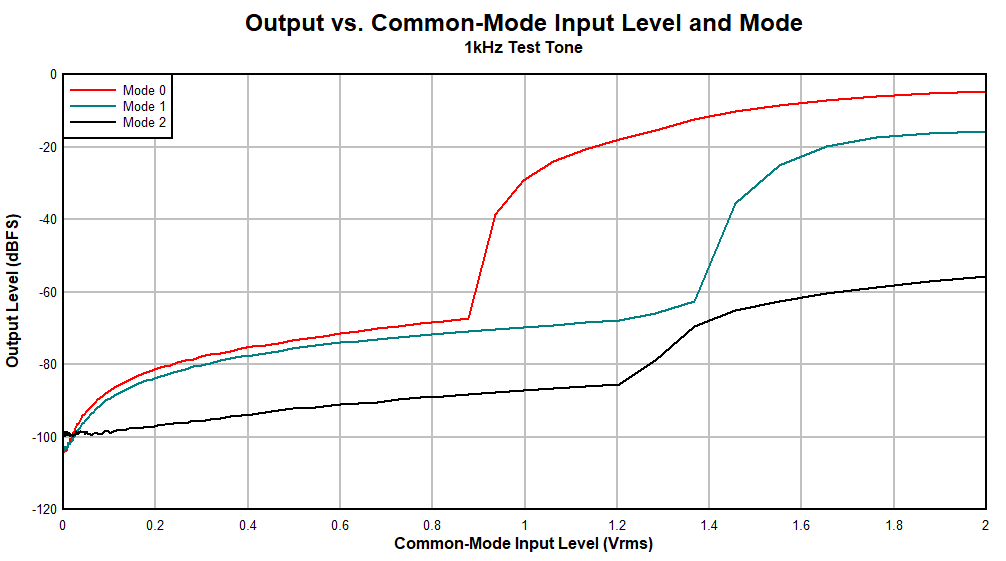SBAA499A July 2021 – April 2022 PCM3120-Q1 , PCM5120-Q1 , PCM6120-Q1 , TLV320ADC3120 , TLV320ADC5120 , TLV320ADC6120
- Trademarks
- 1 Introduction
- 2 Common-Mode Tolerance Modes
- 3 Common-Mode Rejection Performance
- 4 Input Common-Mode Distortion
- 5 Performance for TLV320ADC3120 and PCM3120-Q1
- 6 Performance for TLV320ADC5120 and PCM5120-Q1
- 7 Performance for TLV320ADC6120 and PCM6120-Q1
- 8 Summary
- 9 Related Documentation
- 10Revision History
3 Common-Mode Rejection Performance
Each common-mode tolerance mode will achieve good common-mode rejection up to the limits of that mode. Typical CMRR for each variant in mode 0 is 60dB and typically improves by a few dB in modes 1 and 2 for an equivalent signal amplitude. The higher performance TLV320ADC6120 and PCM6120-Q1 can achieve closer to 80dB CMRR typical in mode 2 and is a good choice for systems that want the best performance possible in applications that require high common-mode tolerance.
Figure 3-1 demonstrates the resulting output level of TLV320ADC5120 and PCM5120-Q1 with a 1kHz common-mode input across the full scale input range of the device in each of the tolerance modes. CMRR would be the difference between the input level (converted to dBFS where full scale is 2-Vrms) and the measured output level shown in the curve.
 Figure 3-1 Output vs. Common-Mode Input Level and Mode
Figure 3-1 Output vs. Common-Mode Input Level and Mode